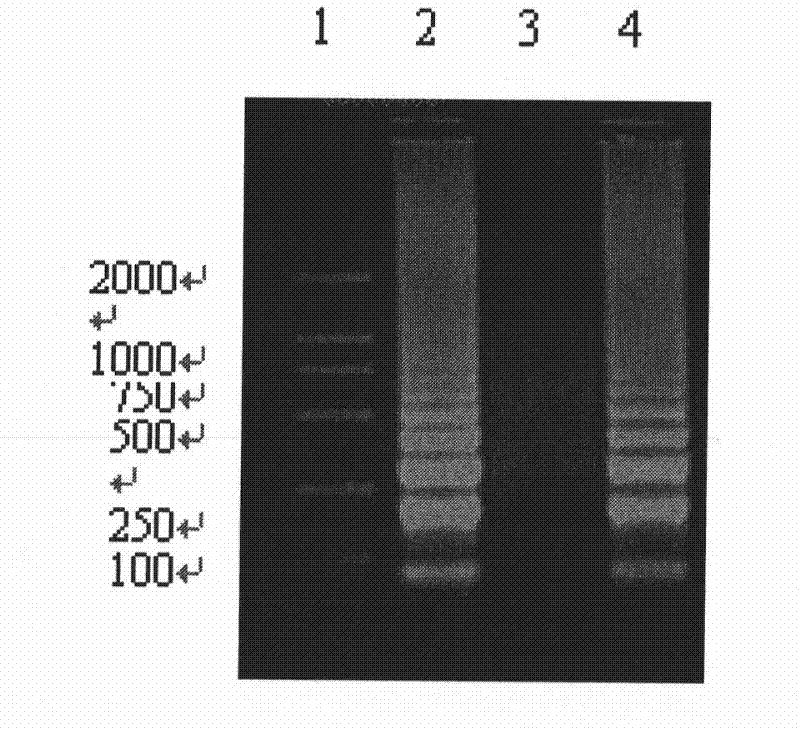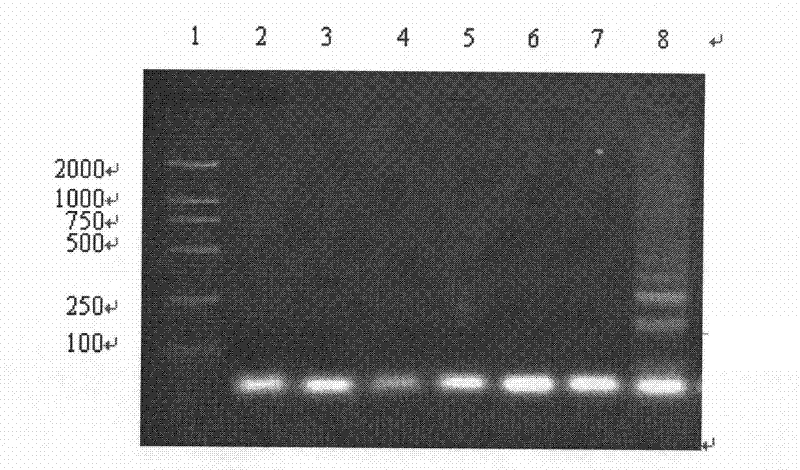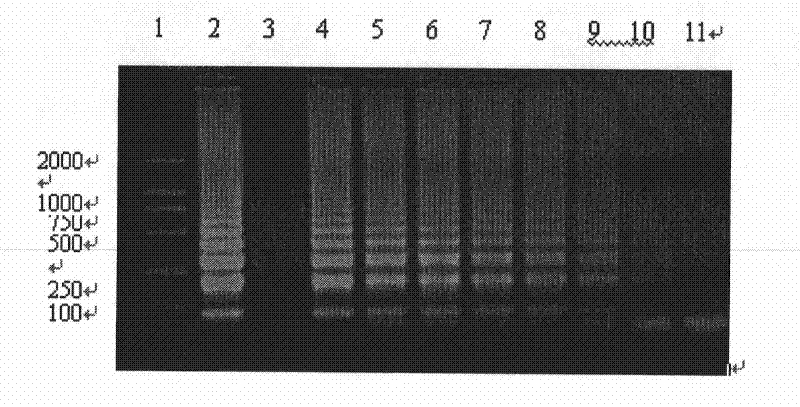Kit for rapidly detecting staphylococcus aureus in milk
A Staphylococcus, aureus technology, applied in the direction of microorganism-based methods, microorganism measurement/inspection, microorganisms, etc., can solve the problems of poor sensitivity, cumbersome steps, and long time consumption, and achieve good specificity, good repeatability, Effects with simple steps
- Summary
- Abstract
- Description
- Claims
- Application Information
AI Technical Summary
Problems solved by technology
Method used
Image
Examples
Embodiment 1
[0061] Composition and preparation of embodiment 1 kit
[0062] 1. Immunomicrospheres
[0063] 1) Preparation of polyclonal antibody against Staphylococcus aureus
[0064] A: Inoculate the identified Staphylococcus aureus into LB culture medium, cultivate overnight at 37°C on a shaker at 200r / min, count, inactivate with 0.3% formaldehyde solution at 37°C for 24 hours, and test for no viable bacteria on a plate with a physiological test. Wash twice with saline, and finally resuspend with 200 μL normal saline, and adjust its concentration to 1×10 9 CFU / ml, fully emulsified with 200 μL Freund's complete adjuvant, used as the immunogen.
[0065] B: Two male healthy New Zealand white rabbits weighing about 1 kg were taken, and the above immunogens were injected subcutaneously at multiple points. Two weeks after the first immunization, the booster immunization was given at a dose of 1×10 10 CFU / ml, 200 μL bacterial solution and 200 μL Freund’s incomplete adjuvant are fully emuls...
Embodiment 2
[0082] The specificity experiment of embodiment 2 kit
[0083] 1. Take Salmonella typhimurium, Shigella dysenteriae, Actinobacillus pleuropneumoniae serotype 5, Escherichia coli O157:H7, Yersinia enterocolitica, and Staphylococcus aureus that have been verified by DNA validity. 20 μL of the bacterial solution was placed in a centrifuge tube and heated at 95°C for 10 minutes for thermal lysis. Centrifuge at 12000rpm for 1min, and take the supernatant.
[0084] 2. Take 1 μL of the supernatants of various bacterial liquids and add them to the reaction system of the LAMP reaction solution for LAMP detection, and make negative and positive controls at the same time, and place them in a 65°C water bath for 50 minutes.
[0085] 3. Take 8 μL LAMP product, conduct electrophoresis detection with 2% agarose gel, and observe the amplification result on a gel image analyzer.
[0086] As a result, only Staphylococcus aureus was amplified, while Salmonella typhimurium, Shigella dysenteriae...
Embodiment 3
[0088] The sensitivity test of embodiment 3 kit
[0089] 1. Take 1 mL of overnight cultured Staphylococcus aureus culture solution and make a 10-fold dilution to 10 -9 . 20 μl of each dilution was placed in a PCR tube and heated at 95°C for 10 minutes for thermal lysis. Centrifuge at 12000rpm for 1min, and take the supernatant.
[0090] 2. Take 1 μL of the supernatant of each dilution and add it to the reaction system of the LAMP reaction solution for LAMP detection. At the same time, make negative and positive controls, and place it in a 65°C water bath for 50 minutes.
[0091] 3. Take 8 μL LAMP product, conduct electrophoresis detection with 2% agarose gel, and observe the amplification result on a gel image analyzer.
[0092] From the experimental results, it can be seen that when the bacterial solution is diluted to 10 -8 can still be amplified, the minimum detection limit is 50CFU / ml (see image 3 ). In the figure, 1 is the standard molecular weight of DL2000; 2 is ...
PUM
 Login to View More
Login to View More Abstract
Description
Claims
Application Information
 Login to View More
Login to View More - R&D
- Intellectual Property
- Life Sciences
- Materials
- Tech Scout
- Unparalleled Data Quality
- Higher Quality Content
- 60% Fewer Hallucinations
Browse by: Latest US Patents, China's latest patents, Technical Efficacy Thesaurus, Application Domain, Technology Topic, Popular Technical Reports.
© 2025 PatSnap. All rights reserved.Legal|Privacy policy|Modern Slavery Act Transparency Statement|Sitemap|About US| Contact US: help@patsnap.com



